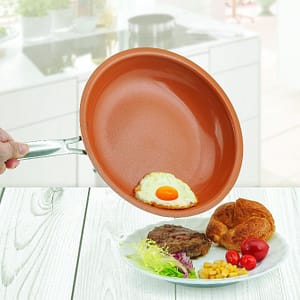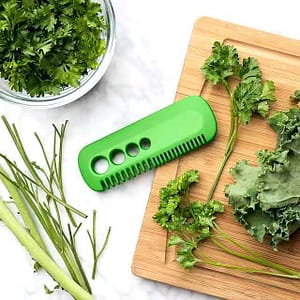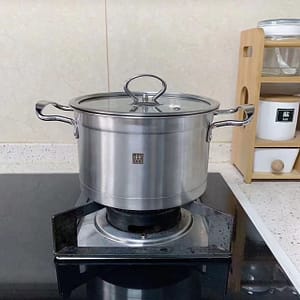
Blog Details

Why are my homemade burgers so dry?
There’s arguably nothing more satisfying than biting into a perfectly cooked, juicy burger. It’s a culinary staple, a backyard BBQ hero, and a weeknight favorite. Yet, for many home cooks, the dream of a succulent patty often ends in a dry, crumbly disappointment. If you’ve ever wondered “Why are my homemade burgers so dry?” you’re not alone. The good news is, achieving that mouth-watering juiciness isn’t just about timing; it’s about understanding a few key factors that can make or break your burger.
Let’s dive into the common culprits turning your burger dreams into dry crumbs and how to fix them!
Culprit #1: Too Lean a Meat
While lean ground beef might seem like a healthier choice, it’s often the primary reason for dry burgers. Fat is flavor and, crucially, moisture. Without enough fat, the burger simply has nothing to render and keep the patty moist as it cooks.
- The Fix: Opt for ground beef with an 80/20 fat-to-lean ratio. This means 80% lean meat and 20% fat. This ratio provides enough fat to keep the burger juicy without making it excessively greasy. For a slightly leaner, but still juicy, option, you could go with 85/15, but avoid anything leaner if juiciness is your goal.
Culprit #2: Overmixing the Meat
When you form your burger patties, it’s tempting to really work the meat to get it uniform. However, overmixing or over-handling ground beef activates the proteins, making the texture dense and tough, and squeezing out precious moisture.
- The Fix: Handle the meat as little as possible. Gently form your patties with light hands. Aim for patties about 3/4 to 1 inch thick for even cooking. And here’s a pro tip for consistent size: use a burger press from our collection! It helps create uniform patties with minimal handling, ensuring even cooking and better texture.
Culprit #3: No Dimple in the Middle
Burgers naturally plump up in the middle as they cook, which can lead to an uneven patty that’s thicker in the center and thinner around the edges, causing the edges to dry out before the center is cooked.
- The Fix: Create a small indentation or dimple in the center of each patty with your thumb before cooking. This helps the burger cook more evenly and prevents it from bulging excessively, ensuring a flatter, juicier patty.
Culprit #4: Cooking at the Wrong Temperature (Too Low or Too High)
If your cooking surface (grill or pan) isn’t hot enough, the burger will slowly dry out as it waits for the heat to penetrate. If it’s too high, the outside will char before the inside cooks, leading to a tough exterior and possibly an undercooked or dry interior.
- The Fix: Cook your burgers on a medium-high to high heat. You want a good sizzle when the patty hits the surface. This creates a flavorful crust quickly while allowing the inside to cook to your desired doneness without drying out. Use a reliable meat thermometer to ensure internal temperature safety without overcooking (160°F/71°C for ground beef for well-done, lower for medium-rare).
Culprit #5: Pressing Down on the Patty
This is one of the most common mistakes that actively squeezes out precious juices. Every time you press down on the burger with your spatula, you’re literally pushing the fat and moisture out, leaving you with a dry, flavorless hockey puck.
- The Fix: Resist the urge to press down on your burgers! Let them cook undisturbed. Flip them only once, maybe twice, to get a good sear on both sides. All those wonderful juices need to stay inside the patty.
Culprit #6: Not Letting Your Burger Rest
Just like with steaks or other cuts of meat, resting your burger after cooking is crucial. This allows the juices, which have migrated to the center during cooking, to redistribute throughout the patty, resulting in a much juicier bite.
- The Fix: Once your burger reaches your desired doneness, remove it from the heat and let it rest for at least 5 minutes before serving or assembling your burger. You can loosely tent it with foil to keep it warm.
By avoiding these common pitfalls and implementing these simple yet powerful techniques, you’ll transform your dry, crumbly burgers into consistently juicy, flavorful masterpieces. Get ready for your best burger experience yet!
Frequently Asked Questions About Juicy Burgers
What’s the best way to season burger meat without making it tough?
Season the surface of your patties just before cooking, rather than mixing seasonings into the meat itself. Salt and pepper on the outside will form a great crust without affecting the patty’s tender texture.
Should I add anything to the ground beef to keep it juicy?
For truly juicy burgers, stick to good quality 80/20 ground beef. Adding breadcrumbs, eggs, or onions mixed into the patty can lead to a meatloaf-like texture rather than a pure burger. If you want added flavor, dice onions or jalapeños very finely and fold them in very gently to minimize overmixing.
How do I know when my burger is done without cutting into it?
The best way is to use a meat thermometer. For ground beef, 160°F (71°C) is generally recommended for well-done. For medium-rare, aim for 130-135°F (54-57°C). You can also learn to gauge doneness by touch, but a thermometer is foolproof.
Can I use different types of ground meat, like turkey or chicken?
Yes, but they are much leaner and will dry out more easily. For turkey or chicken burgers, it’s often essential to add moisture back in with finely diced vegetables (like mushrooms or onions), breadcrumbs soaked in milk, or even a little grated cheese to maintain juiciness.
My burgers shrink a lot when I cook them. Why?
Shrinkage is primarily due to fat rendering out and muscle fibers contracting. Using a higher fat content (like 80/20) and creating that thumb dimple can help minimize shrinkage. Cooking at the right temperature (medium-high to high) also helps the patty cook faster before excessive shrinkage occurs.
Stop settling for dry burgers! With these tips, you’re well on your way to grilling up perfectly juicy, flavorful patties that will impress every time.
Our Products
-
Cooking Baked Goods Meat Thermometer
$14.51 Select options This product has multiple variants. The options may be chosen on the product page -
Sweettreats Non-stick Copper Skillet
$30.49 – $55.44 Select options This product has multiple variants. The options may be chosen on the product page -
Vegetable Leaf Peeler Vegetable Peeler Mini
$7.55 Select options This product has multiple variants. The options may be chosen on the product page -
Double Same Style Stainless Steel Stock Pot Steamer
$64.52 Select options This product has multiple variants. The options may be chosen on the product page -
Stainless Steel Colander Noodle Dumplings Mesh Basket
$27.73 – $32.26 Select options This product has multiple variants. The options may be chosen on the product page -
3 In 1 Multifunctional Rotary Paring Knife
$9.27 – $31.01 Select options This product has multiple variants. The options may be chosen on the product page
Products
-
Cooking Baked Goods Meat Thermometer
$14.51 Select options This product has multiple variants. The options may be chosen on the product page -
Sweettreats Non-stick Copper Skillet
$30.49 – $55.44 Select options This product has multiple variants. The options may be chosen on the product page -
Vegetable Leaf Peeler Vegetable Peeler Mini
$7.55 Select options This product has multiple variants. The options may be chosen on the product page -
Double Same Style Stainless Steel Stock Pot Steamer
$64.52 Select options This product has multiple variants. The options may be chosen on the product page










